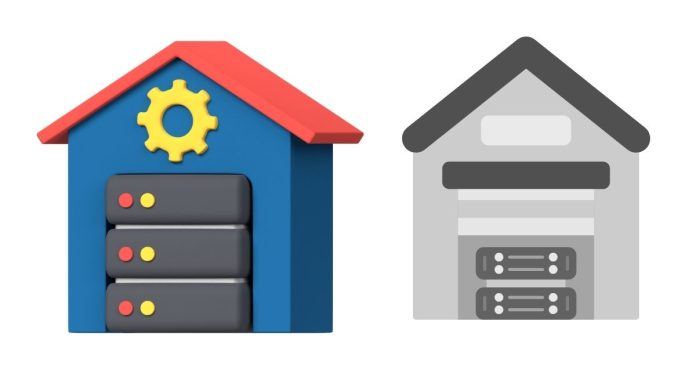In today’s data-driven world, businesses rely heavily on data to make informed decisions. A crucial component of managing and analyzing this data is the data warehouse. But what exactly is a data warehouse, and how does it work? This tutorial will explore the concept of a data warehouse and its key characteristics, helping you understand its importance in modern business intelligence.
What is a Data Warehouse?
A data warehouse (DW) is a centralized repository designed to store, consolidate, and manage vast amounts of historical data from different sources. Unlike operational databases, which focus on day-to-day transactional data, a data warehouse is optimized for querying, reporting, and analysis.
It serves as a single source of truth for an organization’s data, allowing decision-makers to extract insights, run complex queries, and create reports that guide business strategies. The data stored in a warehouse is typically structured and comes from diverse operational systems, such as CRM software, ERP systems, and external sources.
Key Functions of a Data Warehouse:
- Data Integration: A data warehouse integrates data from multiple disparate sources, transforming and standardizing it for consistent analysis. This process is known as ETL (Extract, Transform, Load).
- Historical Analysis: A data warehouse stores large volumes of historical data, allowing businesses to perform trend analysis, forecasting, and comparisons over time.
- Data Accessibility: By centralizing data, a warehouse makes it easy for business users and analysts to access data for decision-making without impacting the operational systems.
- Support for Business Intelligence (BI): Data warehouses support BI tools by providing structured data that is optimized for complex querying and analysis.
Characteristics of a Data Warehouse
A data warehouse has several defining characteristics that differentiate it from other types of databases:
- Subject-Oriented: Data warehouses are organized around key business subjects (e.g., sales, marketing, finance), as opposed to transactional databases, which focus on day-to-day operations. This subject-oriented approach makes it easier for users to understand and query the data.
- Integrated: Data from multiple sources is integrated into a consistent format. This ensures that the data is unified and comparable, even if it comes from different systems with different formats, structures, or coding conventions.
- Non-Volatile: Once data is loaded into a data warehouse, it is typically read-only and does not change. This makes it ideal for analytical queries since it remains stable and unchanged over time. New data is added through scheduled ETL processes but does not modify historical data.
- Time-Variant: A data warehouse stores historical data, allowing businesses to analyze trends and changes over time. This time dimension enables longitudinal analysis, helping businesses track performance, growth, and changes over extended periods.
- Optimized for Read Access: Data warehouses are designed to handle complex queries and large volumes of data. Unlike operational databases that prioritize quick transaction processing, data warehouses prioritize fast and efficient data retrieval for analytical tasks.
Components of a Data Warehouse
A data warehouse consists of several key components:
- Data Source Layer: The origin of the data, which can be operational databases, flat files, external sources, etc.
- ETL Process: This involves extracting data from different sources, transforming it into the desired format, and loading it into the data warehouse.
- Data Storage Layer: The physical storage system that holds structured data in tables or multidimensional models (like OLAP cubes).
- Data Presentation Layer: This is the interface through which users access the data, typically through BI tools or custom reporting dashboards.
- Metadata: Data about data, which helps users understand the structure, relationships, and meaning of the stored information.
- Data Marts: Subsets of a data warehouse designed for specific business functions or departments. Data marts focus on a particular area (e.g., marketing or sales) and provide more specialized, user-friendly data.
Benefits of Using a Data Warehouse
- Enhanced Decision-Making: By consolidating data in a single, accessible location, decision-makers have access to accurate, consistent, and timely information.
- Improved Business Intelligence: A data warehouse supports data mining, reporting, and advanced analytics, which enhance the organization’s ability to derive actionable insights.
- Efficiency in Reporting: With a data warehouse, users can run complex queries without burdening the operational systems, resulting in faster and more accurate reporting.
- Historical Analysis: By storing historical data, a data warehouse helps businesses analyze past performance and predict future trends.
- Data Consistency: A data warehouse integrates and standardizes data from multiple sources, reducing the chances of data discrepancies and improving consistency across reports.
Challenges of Data Warehousing
While data warehouses offer numerous advantages, they come with certain challenges, including:
- Cost: Building and maintaining a data warehouse can be expensive in terms of hardware, software, and expertise.
- Complexity: Designing a data warehouse that integrates data from multiple sources and meets business requirements can be complex and time-consuming.
- Data Quality: Ensuring that the data being fed into the warehouse is accurate, clean, and well-structured is critical for the effectiveness of the warehouse.
- Scalability: As data grows, scaling a data warehouse to handle larger volumes of information may require significant adjustments to hardware and processes.
Conclusion
A data warehouse is a powerful tool for businesses that need to make sense of vast amounts of historical and operational data. With its structured, integrated, and time-variant nature, it facilitates better decision-making, enhanced reporting, and deeper business insights. However, building and maintaining a data warehouse requires careful planning and investment. By understanding its characteristics and functions, businesses can leverage the full potential of a data warehouse to optimize their business intelligence processes.


